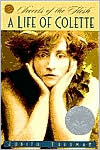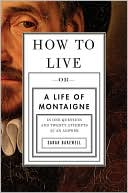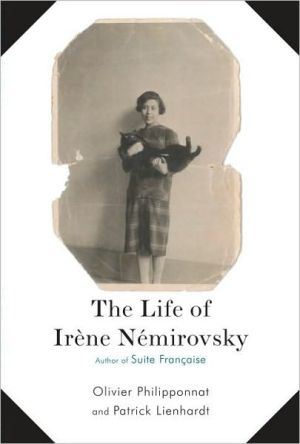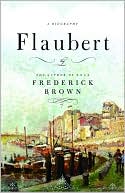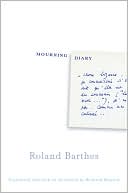Secrets of the Flesh: A Life of Colette
A scandalously talented stage performer, a practiced seductress of both men and women, and the flamboyant author of some of the greatest works of twentieth-century literature, Colette was our first true superstar. Now, in Judith Thurman's Secrets of the Flesh, Colette at last has a biography worthy of her dazzling reputation.\ Having spent her childhood in the shadow of an overpowering mother, Colette escaped at age twenty into a turbulent marriage with the sexy, unscrupulous Willy—a literary...
Search in google:
From the award-winning biographer of Isak Dinesen comes a stunningly vivid portrait of Colette, one of the greatest writers and most captivating personalities of our age. of photos. Salon - Pam Rosenthal "Like all those who never use their strength to the limit," Colette wrote, "I am hostile to those who let life burn them out." Fiercely disciplined, hugely productive, the author of Gigi and Cheri lived 80 years and produced nearly 80 volumes of fiction, memoirs, journalism and drama. She married three times, had male and female lovers and for a time supported herself as a mime, dancing semi-nude in music halls throughout France. When she died in 1954, she received the first state funeral the French Republic had ever given a woman. And she created the subtlest, most sustained literary examination of love and sex that we have. An initial reading can be perplexing, though. Colette is a strikingly elusive writer. Packing her books with delicious clothes and furniture and ravishingly attractive people, she delivers pleasures that most "women's writers" only promise. But her prose is rarely straightforward or transparent, and her characters -- captured at the height of their beauty or in beauty's humiliating decline -- maintain a mocking, self-protective reticence. Secrets of the Flesh, Judith Thurman's superb life of Colette, guides the reader with great assurance through a wealth of complex material. Thurman won a 1983 National Book Award for Isak Dinesen: The Life of a Storyteller. A gifted literary biographer, as sure-handed as her subject, she never conflates the life with the work or allows her admiration to interfere with an informed and delicately balanced critique of Colette's uniqueness. Colette, Thurman says, was "remarkable among modern writers -- perhaps the great women in particular -- for a sense of self not vested in her mind." Maybe female writers have simply had to think harder in order to carve out space within ideologies that would otherwise have shut them out: Witness Doris Lessing's communism, Simone de Beauvoir's existentialism. Colette, on the other hand, seems to have missed most of the intellectual action that animated European politics during her lifetime. "There was not an idea that could carry Colette away," says Thurman, "or a sensation that couldn't." She drew inspiration from entertainers, courtesans, an aristocratic Parisian lesbian subculture and the fin de siècle gay aesthetes whose "fetish worship of human beauty" she shared. She admired the bravery of lives lived on the sexual edge, the consciously chosen tastes and prejudices, the risk of physical danger. Her understanding of gender was far ahead of its time; her treatment of sex between generations can still make us uneasy. Thurman describes Claudine, the heroine of Colette's earliest fiction, as "this century's first teenage girl: rebellious, tough talking, secretive, erotically reckless and disturbed." Claudine marries a man 25 years older than she in a sensually saturated pulp wishdream of love as eternal childhood. Contemporary fans couldn't get enough of her: The books and product spinoffs (Claudine cigarettes, chocolates, clothing) were huge sellers. The books are still fun, but their darker themes remain undeveloped. Claudine's marriage is too much like the long, blissful summer vacation Dolly Haze must have thought she'd be taking with Humbert Humbert. For Colette's most powerful examination of cross-generational love one turns to Cheri, the story of an affair between an elegant woman of 49 and a young man of 25. The novel explores a passionate attraction that's simultaneously selfish and self-sacrificing, controlling and terrified of losing control. Léa's love for Chéri is both sexual and maternal, a seductive, disturbing combination that leaves both partners incapable of being satisfied by anything simpler. Courting dissatisfaction in love, Colette's characters nonetheless do so within one of the most satisfactory physical worlds ever depicted. Dominique Aury (who under the pseudonym Pauline Réage wrote Story of O) remarked that Colette never neglects to describe her heroines' meals or the comforts, grand or shabby, of their bedrooms and bathrooms. Her interiors have the plenitude of gardens, and she writes magnificently of food, flowers and animals -- not analytically but, as Thurman says, "from the point of view...of the child first 'sorting out' her paradoxical instincts and experience." A less happy immaturity was the intellectual and moral passivity that allowed her to publish in pro-Vichy, anti-Semitic journals during the Nazi occupation, even as she fought devotedly (and successfully) to keep her Jewish third husband from being deported. It's one of the great virtues of Thurman's biography that she deals unsparingly with Colette's tin ear for moral principle, locating her complacencies within contemporary French social history and popular opinion. There's one point on which I would have liked Thurman to be more complete. It's a relatively frivolous one, but still, I'd hoped to learn what Colette was actually doing onstage during those pantomimes for which she was so adorably dressed as a faun, a cat or an Egyptian in a jeweled bra. How long were the performances? What part did words and music play? Was anybody doing anything except striking poses, preferably with some clothes torn off? The publicity photos for these shows look pretty awful, and it remains unclear to me what might have prompted a leading aesthete to call Colette's performance "a day of art at the theater." This almost-quibble aside, Secrets of the Flesh is a fiercely intelligent and accomplished book and -- using the words with all due weight -- an immense pleasure.
"Biographers generally believe that it is easy to be a 'monster.' It is even harder than being a saint." — COLETTE, Lettres à ses pairs\ In March of 1900, a forty-one-year-old Parisian man of letters published a novel that purported to be the journal of a sixteen-year-old provincial schoolgirl named Claudine. Henry Gauthier-Villars was best known as an amusingly opinionated music critic who had championed Wagner and insulted Satie. His paunch and top hat had endeared him to the cartoonists of the penny press; and his duels, his puns, and his seductions of women managed to generate almost as much copy as he wrote himself. Gauthier-Villars used his own name for scholarly nonfiction and one of many pseudonyms when a work was light. He and his alter egos—Willy, Jim Smiley, Boris Zichine, Henry Maugis, and the Usherette—had a bibliography which already included a collection of sonnets, another of essays on photog-raphy, several comic almanacs, a monograph on Mark Twain, and a number of salacious popular novels. It was not a very well kept secret that most of these works had been improved by other hands, if not entirely ghostwritten. In an ironic bow to this reputation, Willy claimed that the new manuscript had arrived in the mail tied with a pink ribbon—the literary equivalent of a baby girl delivered by the stork.\ Claudine at School was not the first authorial travesty of its kind, and certainly not the last, although Claudine herself was something new. She was the century's first teenage girl: rebellious, tough talking, secretive, erotically reckless and disturbed, by turns beguiled and disgusted at her discovery of what it means to become a woman. In his preface to the book, Willy calls her "a child of nature," a "Tahitian before the advent of the missionaries," and he pays homage to her "innocent perversity" even while regretting "this word 'perversity,' which subverts the idea that I wish to give of . . . Claudine 's special case—for the very reason that I insist one cannot find any conscious vice in this young girl, who is, one might say, less immoral than she is 'amoral.' "\ The novel languished for a few months until Willy rallied his influential friends, who duly produced reviews hailing Claudine at School as a masterpiece. By autumn, it had sold some forty thousand copies, becoming—including its four sequels—one of the greatest French bestsellers of all time. There were five Claudines in all, two successful plays, and a range of product spin-offs in the modern sense, including Claudine cigarettes, perfume, chocolates, cosmetics, and clothing. The "author," notorious to begin with, became something of a brand name himself. "I think that only God and maybe Alfred Dreyfus are as famous as [Willy]," said Sacha Guitry.\ The man who signed Claudine at School is now best remembered as the "deplorable" first husband of the woman who wrote it. Madame Henry Gauthier-Villars, née Sidonie-Gabrielle Colette, was then an athletic beauty of twenty-seven who could pass easily for seventeen. She concealed her feelings and her talent, but she flaunted her rustic accent and a plait of auburn hair as long as she was tall. Her family in Burgundy still called her "Gabri," but in Paris she went by the waifish moniker of Colette Willy. She had rejected her own first name long before she married, insisting that her school friends—rowdy village girls like herself and like Claudine—call one another by their patronyms, comme des garçons. When she married for the second time, Colette Willy became Colette de Jouvenel, and finally, triumphantly, syncretically, just Colette.\ Colette began writing in her early twenties, living turbulently and working tirelessly, her powers waxing as she aged. In the course of half a century, she produced nearly eighty volumes of fiction, memoirs, journalism, and drama of the highest quality. Her published correspondence fills seven volumes, and at least three important collections of letters remain unedited. Her critics and biographers have been more prolific than she was.\ Digesting this colossal banquet was not the greatest of my challenges as her biographer. Colette 's friend Jean Cocteau liked to say: "Je suis un mensonge qui dit toujours la vérité": I am a lie that always speaks the truth. To which Colette 's American anthologist, Robert Phelps, would add: she is a truth who always speaks a lie. A French critic would note more expansively: "Colette 's art is that of the lie. But the great game she plays with us is, precisely, to stuff her best lies with great flashes of truth. To read her with pleasure thus consists of disentangling, with a deft pair of tweezers, the true from the false." The autobiographical candor of Colette 's best writing is an illusion, just as her celebrated physical immodesty is misleading. She has, as Dominique Aury puts it, "a fierce modesty of sentiment." She actively dis-dains all forms of empathy and resists being known.
IntroductionxiPart 11Part 261Part 3147Part 4241Part 5333Part 6433Notes and Sources501Selected Bibliography563Acknowledgments569Index573
\ Pam Rosenthal"Like all those who never use their strength to the limit," Colette wrote, "I am hostile to those who let life burn them out." Fiercely disciplined, hugely productive, the author of Gigi and Cheri lived 80 years and produced nearly 80 volumes of fiction, memoirs, journalism and drama. She married three times, had male and female lovers and for a time supported herself as a mime, dancing semi-nude in music halls throughout France. When she died in 1954, she received the first state funeral the French Republic had ever given a woman. And she created the subtlest, most sustained literary examination of love and sex that we have.\ An initial reading can be perplexing, though. Colette is a strikingly elusive writer. Packing her books with delicious clothes and furniture and ravishingly attractive people, she delivers pleasures that most "women's writers" only promise. But her prose is rarely straightforward or transparent, and her characters -- captured at the height of their beauty or in beauty's humiliating decline -- maintain a mocking, self-protective reticence.\ Secrets of the Flesh, Judith Thurman's superb life of Colette, guides the reader with great assurance through a wealth of complex material. Thurman won a 1983 National Book Award for Isak Dinesen: The Life of a Storyteller. A gifted literary biographer, as sure-handed as her subject, she never conflates the life with the work or allows her admiration to interfere with an informed and delicately balanced critique of Colette's uniqueness.\ Colette, Thurman says, was "remarkable among modern writers -- perhaps the great women in particular -- for a sense of self not vested in her mind." Maybe female writers have simply had to think harder in order to carve out space within ideologies that would otherwise have shut them out: Witness Doris Lessing's communism, Simone de Beauvoir's existentialism. Colette, on the other hand, seems to have missed most of the intellectual action that animated European politics during her lifetime. "There was not an idea that could carry Colette away," says Thurman, "or a sensation that couldn't."\ She drew inspiration from entertainers, courtesans, an aristocratic Parisian lesbian subculture and the fin de siècle gay aesthetes whose "fetish worship of human beauty" she shared. She admired the bravery of lives lived on the sexual edge, the consciously chosen tastes and prejudices, the risk of physical danger. Her understanding of gender was far ahead of its time; her treatment of sex between generations can still make us uneasy.\ Thurman describes Claudine, the heroine of Colette's earliest fiction, as "this century's first teenage girl: rebellious, tough talking, secretive, erotically reckless and disturbed." Claudine marries a man 25 years older than she in a sensually saturated pulp wishdream of love as eternal childhood. Contemporary fans couldn't get enough of her: The books and product spinoffs Claudine cigarettes, chocolates, clothing were huge sellers. The books are still fun, but their darker themes remain undeveloped. Claudine's marriage is too much like the long, blissful summer vacation Dolly Haze must have thought she'd be taking with Humbert Humbert.\ For Colette's most powerful examination of cross-generational love one turns to Cheri, the story of an affair between an elegant woman of 49 and a young man of 25. The novel explores a passionate attraction that's simultaneously selfish and self-sacrificing, controlling and terrified of losing control. Léa's love for Chéri is both sexual and maternal, a seductive, disturbing combination that leaves both partners incapable of being satisfied by anything simpler.\ Courting dissatisfaction in love, Colette's characters nonetheless do so within one of the most satisfactory physical worlds ever depicted. Dominique Aury who under the pseudonym Pauline Réage wrote Story of O remarked that Colette never neglects to describe her heroines' meals or the comforts, grand or shabby, of their bedrooms and bathrooms. Her interiors have the plenitude of gardens, and she writes magnificently of food, flowers and animals -- not analytically but, as Thurman says, "from the point of view...of the child first 'sorting out' her paradoxical instincts and experience."\ A less happy immaturity was the intellectual and moral passivity that allowed her to publish in pro-Vichy, anti-Semitic journals during the Nazi occupation, even as she fought devotedly and successfully to keep her Jewish third husband from being deported. It's one of the great virtues of Thurman's biography that she deals unsparingly with Colette's tin ear for moral principle, locating her complacencies within contemporary French social history and popular opinion.\ There's one point on which I would have liked Thurman to be more complete. It's a relatively frivolous one, but still, I'd hoped to learn what Colette was actually doing onstage during those pantomimes for which she was so adorably dressed as a faun, a cat or an Egyptian in a jeweled bra. How long were the performances? What part did words and music play? Was anybody doing anything except striking poses, preferably with some clothes torn off? The publicity photos for these shows look pretty awful, and it remains unclear to me what might have prompted a leading aesthete to call Colette's performance "a day of art at the theater."\ This almost-quibble aside, Secrets of the Flesh is a fiercely intelligent and accomplished book and -- using the words with all due weight -- an immense pleasure.\ — Salon\ \ \ \ \ \ Publishers Weekly - Publisher's Weekly\ In May 1945, the elderly Sidonie-Gabrielle Colette, long known by her surname, became only the second woman to be inducted into France's staid but extremely prestigious Acadamie Goncourt. At 72, she had become but a shadow of the androgynous sexpot novelist who had flouted convention in the early years of the century (even to the point of taking, when nearly 50, her teenage stepson as a lover). She had become respectable, the acclaimed author of the Claudine novels, The Last of Cheri and Gigi. Thurman's biography comes on the heels of the final installment of Francis and Gontier's multivolume life, and it triumphantly withstands the comparison. Elegantly written and handily appearing in one substantial volume, Thurman's book has fewer personal details than the French duo's, but it is more effective at setting the morally subversive Colette in the social milieu of early-20th-century Paris. Despite much legwork on her own, Thurman does lean upon Colette's many recent French biographers. And her account of the Nazi occupation of France is sometimes hard to follow. But the book is impressive. Thurman (whose Isak Dinesen: The Life of a Storyteller, won the National Book Award in 1982) does not hesitate to expose the dishonest, selfish, exploitive facets of the feminist icon who wrote articles for Occupation newspapers and sometimes behaved heartlessly toward lovers. Nevertheless, her Colette comes off as an appealing, even heroic, figure, quoted memorably as saying, "What more can one be sure of than that which one holds in one's arms, at the moment one holds it in one's arms." 24 pages of provocative photographs. (Oct.) Copyright 1999 Cahners Business Information.\ \ \ Library JournalColette has always delighted us, but have we really known her? We certainly do now, with Thurman's exhaustively detailed, exquisitely handled new work, which takes us from Colette's innocent girlhood through several rambunctious marriages and affairs to the heart of a great writer. Colette and her world come alive here. (LJ 10/1/99) Copyright 2000 Cahners Business Information.\ \ \ \ \ DalyThurman's genius in this National Book Award-nominated biography is to show every one of Colette's clay feet (and believe us, she had more than two) without reserve and then to show how wickedness can run right through a great spirit without destroying it. In the end we are left with no illusions about Colette, but we are still heartily glad to have had the chance to know her.\ Enertainment Weekly Editor's Choice\ \ \ \ \ \ Elaine MarksAlthough Thurman is occasionally disapproving of Colette's politics, of her neglect of her dying mother and of her daughter...what dominates is a tone of admiration and wonder...\ —The Women's Review of Books\ \ \ \ \ Carol AnshawIn Judith Thurman, Colette has found a biographer who is up to the task of chronicling her Cinema-Scope 3-D life. \ The Advocate\ \ \ \ \ \ Gia KourlasA great biography is an inspiration, and Judith Thurman's Secrets of the Flesh: A life of Coletteis as poetic a work of art as anything her subject, the brilliant French writer, could have penned...Secretsreads as smoothly as a novel, and thurman's technique is flawless—interviws are seamlessly woven throughout descriptions of French history, the avant-garde and lesbian subcultures of Europe, and passages from Colette's novels and letters.\ Time Out New York\ \ \ \ \ \ Newsweek MagazineJust nominated for a National Book Award, this bio of the great French writer Colette is intelligent and comprehensive.\ \ \ \ \ Kirkus ReviewsFrom the National Book Award-winner, a comprehensive biography of the French novelist Colette that, once it moves on from the obligatory psychologizing, becomes an engrossing study of a woman determined to live as she chose. Colette (1873–1954), author of such books as The Cat and Gigi, was both a gifted writer and a celebrity. A participant in France's most glittering years of cultural brilliance as well as the shameful years of wartime collaboration, she was, if not exactly mistress to an age, certainly one of its poster girls. Determined to be an individual, Colette did what she liked, even if it provoked scandal (she appeared bare-breasted on the stage) or inflicted pain (her daughter was raised by a nanny). Despite Colette's claims of a happy childhood in the country, Thurman contends that she resented her strong mother's domineering but well-intentioned ways, and was subsequently suspicious of maternal love and an inadequate mother herself. Given the contrast between her mother and her father, a gentle soul too "oblivious to be possessive," Colette's deepest yearnings, according to Thurman, were to be "as free as a tomboy, and cherished as a Daddy's girl." Thurman deftly if not always convincingly uses these insights to explicate Colette's writings as well as her long and colorful life. Thurman also details, sometimes too conscientiously, Colette's three marriages; her relationship with the notorious Missy, a lesbian transvestite Marquise; her numerous affairs, including one with her stepson; and her friendships with such luminaries as Proust, Gide, and Cocteau. Regarded as one of France's great literary figures, she was the first woman to be given a statefuneral—a tribute, Thurman suggests, that reflected as much respect for her accomplishments as affection. A solid, intelligent work that goes a long way to explain a woman whose life was as distinctive as her writing, a woman, Gide observed, who wrote about and understood "the least admitted secrets of the flesh." (24 pages photos)\ \
